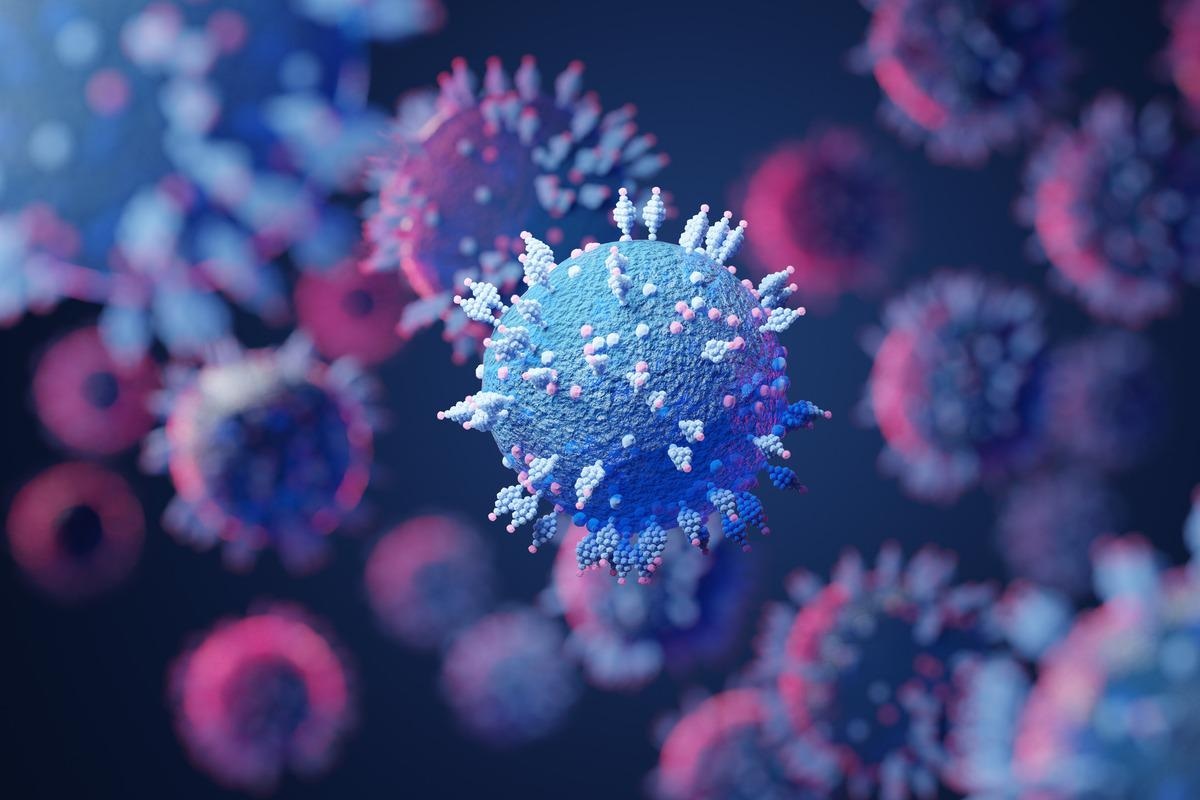In a recent study posted to the bioRxiv* pre-print server, a team of researchers assessed the affinity of the severe acute respiratory syndrome coronavirus 2 (SARS-CoV-2) Omicron (lineage B.1.1.529) variant of concern (VOC) towards major histocompatibility complex (MHC) binding.
 Study: In silico analysis of predicted differential MHC binding and CD8+ T-cell immune escape of SARS-CoV-2 B.1.1.529 variant mutant epitopes. Image Credit: Fit Ztudio/Shutterstock
Study: In silico analysis of predicted differential MHC binding and CD8+ T-cell immune escape of SARS-CoV-2 B.1.1.529 variant mutant epitopes. Image Credit: Fit Ztudio/Shutterstock
The rapidly spreading SARS-CoV-2 Omicron VOC and its high mutability have raised global public health concerns as the number of coronavirus disease 2019 (COVID-19) infections and related hospitalizations increase. Understanding the effect of this novel SARS-CoV-2 strain on the human immune response and immunity is of great significance. Studies investigating the impact of the Omicron VOC on antibody binding and its interaction with the CD8+ T-cells are crucial to curb the transmission and hazardous effects of the variant.

 *Important notice: bioRxiv publishes preliminary scientific reports that are not peer-reviewed and, therefore, should not be regarded as conclusive, guide clinical practice/health-related behavior, or treated as established information.
*Important notice: bioRxiv publishes preliminary scientific reports that are not peer-reviewed and, therefore, should not be regarded as conclusive, guide clinical practice/health-related behavior, or treated as established information.
About the study
The present study analyzed the impact of mutations in the SARS-CoV-2 Omicron VOC on MHC-binding and the variant’s consequent evasion of the CD8+ T-cell immune response.
The researchers collected the SARS-CoV-2 reference genome, Pfam (protein families) domains, and mutations in B.1.1.529, B.1.627.2 lineages. The sequences of spike protein references and the Omicron and Delta VOC lineages were combined to form alternative spike proteins for each lineage. Global alignment was employed to form homologous epitopes. The top five human leukocyte antigen (HLA) alleles were chosen from select populations including Sub Saharan Africa, Zulu in South Africa, Black in South Africa, White in South Africa, and Europe.
The team used NetMHCpan-4.1 to perform MHC binding for every epitope having eight, nine, 10, or 11 amino acids. The amplitude of the quotient between the best-ranked epitope in the Immune Epitope Database (IEDB) and the best ranked homologous epitope from either Omicron or Delta VOC was calculated. SARS-CoV-2 epitopes which had a positive outcome for MHC ligands or T-cell assays were used as a baseline. The mutated epitopes were identified along with their homologous counterparts.
The researchers applied Fisher’s exact test on different populations and lineages to evaluate the enhancement in an overall decrease in protein major histocompatibility complex (pMHC) binding. Mutations on the top five HLA alleles of the populations were evaluated. Mutations with less reduced binding epitopes had an odds ratio of less than 1.0 with a significant p-value while mutations with more reduced binding epitopes had an odds ratio of more than 1.0 with a significant p-value.
Results
The study results showed that the SARS-CoV-2 Omicron VOC spike protein had 34 mutations as compared to the nine mutations in the Delta VOC. Delta shared 92.21% while Omicron shared 80.40% of IEDB epitopes with the reference genome. A total of 13 epitopes in the reference genome had no exact match. One of these 13 epitopes was observed in the Omicron sequence that overlapped the mutation that is also present in the Beta lineage. As compared to the wild-type strain, 31 and 78 epitopes were mutated in the Delta and Omicron VOC, respectively.
No homogeneity was observed in epitope coverage in the spike protein. In the Delta VOC, one mutation affected nine epitopes while three mutations affected one epitope each. In Omicron VOC, one mutation affected nine epitopes while no epitopes were affected by two mutations. Three shared mutations were also observed between Delta and Omicron VOCs. Furthermore, one mutation was noted to affect the same amino acid in both the VOCs. The overall number of mutated epitopes and the number of mutations were related in an increasing non-linear correlation.
The IEDB epitope, HLA allele, and homologous epitopes, which were characterized by a decrease in predicted MHC binding affinity, improved the wild-type predicted MHC binding.
The overall reduced binding affinity of pMHC when enriched with enhanced binding showed Fisher test p-values of 3.24x10-8 for the Sub-Saharan population, 9.1x10-5 for the Black South African population, and 1.19x10-9 for the European population in the case of the Omicron VOC. However,p-values of 1.03x10-2, 9.33x10-3, and 9.71x10-4 were observed for Sub-Saharan, European, and Black South African populations for the Delta VOC.
Assessing 35 HLA alleles among HLA-A, HLA-B, and HLA-C genes, the study found one amino acid substituted in Delta VOC that enhanced the binding affinity in the VOC. Three amino acid substitutions found in the Omicron VOC also enriched the HMC binding affinity of the VOC.
Conclusion
The study findings showed that Omicron VOC and Delta VOC mutations in pHMC reduced MHC binding ability. The mutated epitopes reduced the HLA response which indicated the evasion of the VOCs from CD8+ T-cell in specific HLA alleles. The study showed that the Omicron VOC does not entirely evade the human immune response. However, Omicron mutations introducing amino acids linked to increased immunogenicity were also observed.
Although the Omicron VOC did not show a strong immune escape mechanism in this study, it is crucial to monitor the potential of the mutations in enabling immune evasion and their impact on disease severity.

 *Important notice: bioRxiv publishes preliminary scientific reports that are not peer-reviewed and, therefore, should not be regarded as conclusive, guide clinical practice/health-related behavior, or treated as established information.
*Important notice: bioRxiv publishes preliminary scientific reports that are not peer-reviewed and, therefore, should not be regarded as conclusive, guide clinical practice/health-related behavior, or treated as established information.